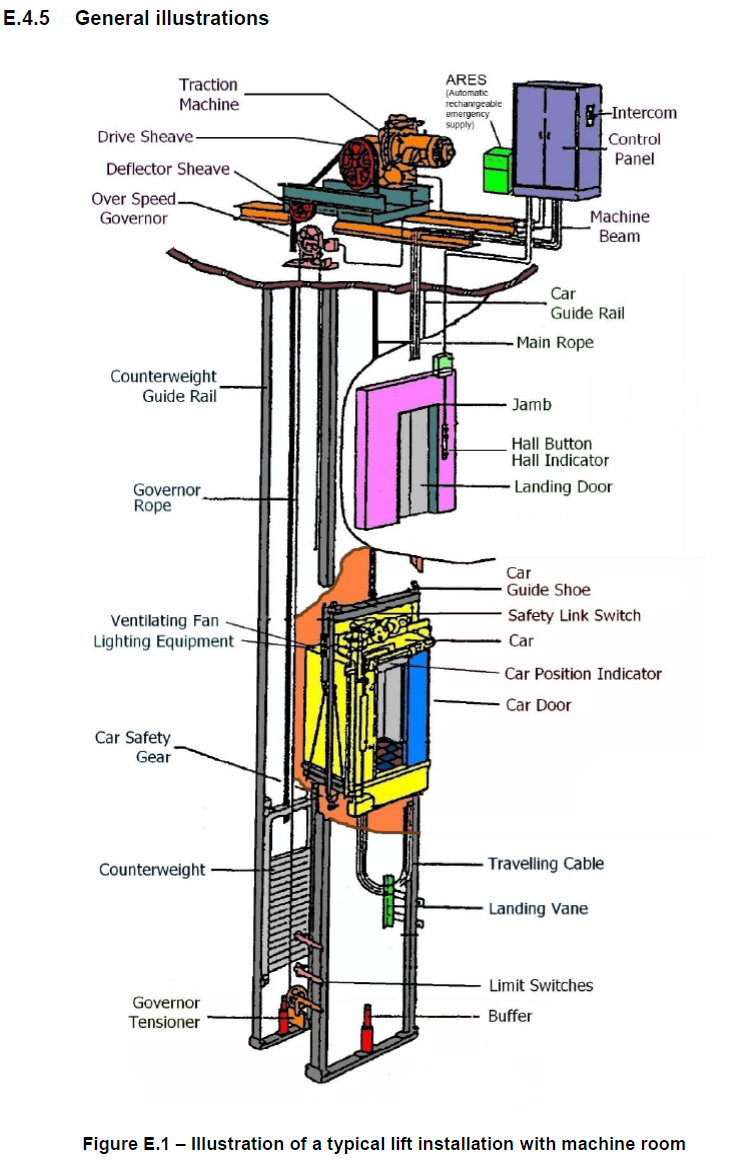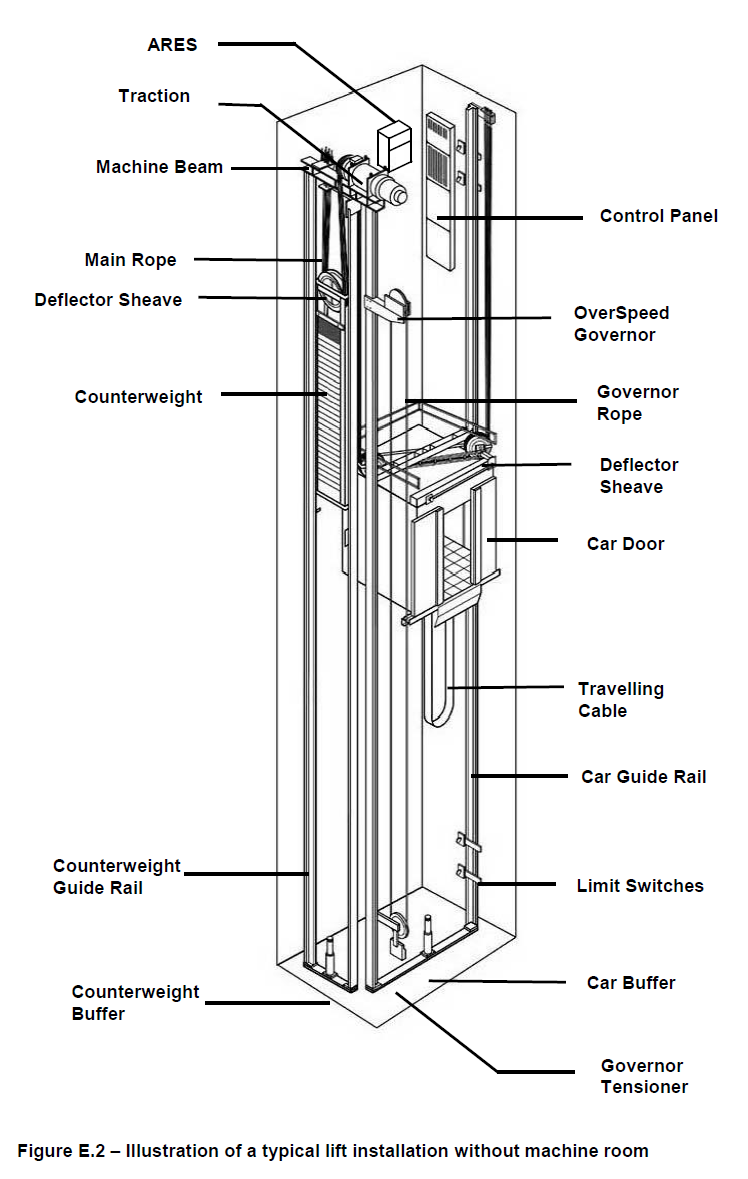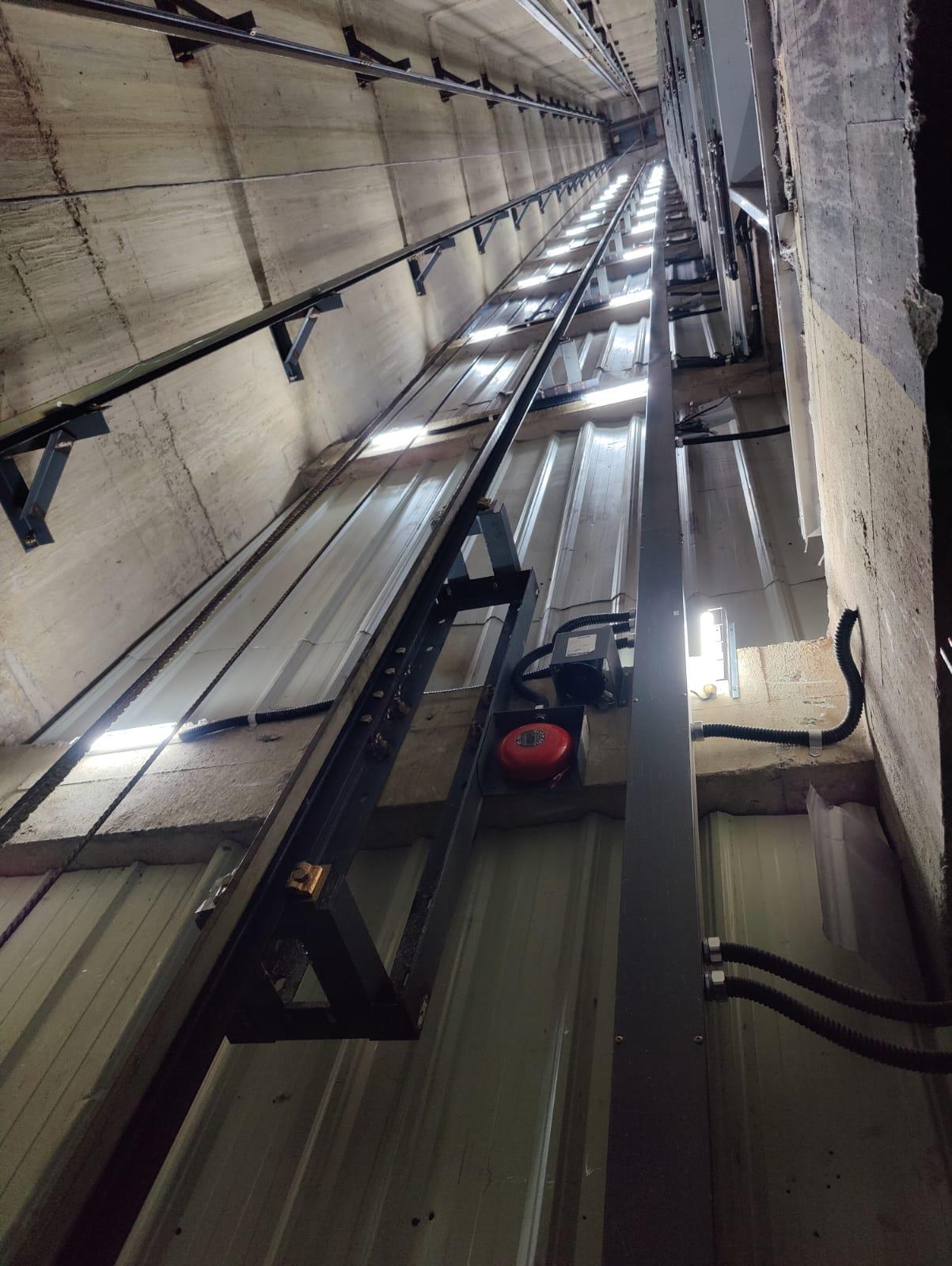Building Inspection, Maintenance and Facility Management
Autonomous Inspection of Lift Shafts
Challenge Statement Owner:

EM Services is a joint venture between the Housing & Development Board and Keppel Land Limited. They are one of Singapore’s largest estate and property management companies, with a robust track record in managing a diverse range of properties and townships in Singapore. Their portfolio includes the management of HDB residential units, retail and shop units, market and food centre stalls, as well as vehicle parking lots. EM Services also supplies, installs, maintains and inspects lifts, and has its own portfolio of about 4,000 lifts. It also carries out annual inspection of third-party lifts and it inspects an estimated total of 17,000 lifts annually.
Background
The process of installing lifts in a building begins with creating shop drawings based on architectural plans. These typically 2D drawings depict the lift layout through plan and elevation views. Once the building is topped off, EM Services begins the installation process. The lift shaft is usually empty. The lift engineers have limited capability to inspect it until a fixed (scaffold) or moving (example, gondola) working platform is set up.
After the working platform is installed, a "template" indicating guide rail and door sill positions is fixed to the lift shaft's soffit. Plumb lines dropped from this template serve as vertical references for installing guide rails, door headers, and door sills. The lift shaft's verticality is crucial and is later adjusted as needed during installation. Guide rail brackets and sill supports are fabricated based on specific dimensions. Minor adjustments (such as cutting or welding) can be made on-site to accommodate slight variations in verticality.
However, poorly constructed lift shafts with significant verticality issues may require new brackets to be fabricated, resulting in additional cost and delays; some need alterations to the lift shaft, leading to wastage in materials, manpower and time. In some situations, there is no choice but to install a smaller lift than originally planned.



After the lift is installed, a quality assurance check ensures guide rails are vertical, parallel, and within specified tolerances. Any deviations may impact ride quality and cause premature part failure. The inspection is typically performed manually.
While modern construction technology has largely minimised verticality issues in low-rise buildings, challenges persist in high-rise projects (over 50 storeys) and when doing lift replacement works in older buildings. It is also time-consuming to perform annual maintenance inspections on the long lift shafts in these high-rise structures.
Approximately 1,000 lifts are installed each year by all lift companies in Singapore. EM Services is looking into automating these inspection processes, so as to improve the work-at-height safety and reduce the amount of manual labour required to inspect lift shafts for the vertical transportation industry in Singapore. The expected reduction is at least 2 man-days per lift with this automation.
The Challenge
EM Services is looking for a solution to automate the inspection of the lift shaft and the lift parts/components installed within the shaft.
Requirements
The solution should:
- Allow for the dimension and location of the rail brackets to be determined without having to install plumb lines;
- Perform a contactless scan of the entire lift shaft to generate a 3D CAD model with an accuracy of +/- 1mm, allowing for inspection to be done off-site by a Specialist Professional Engineer (SPE);
- Provide 3D video and/or photos with sufficient resolution for offline analysis, in conjunction with the 3D scanning
- Enable the use of BIM for lift installations: with the 3D model of the as-built shaft, the 3D model of the lift assemblies could be fitted into the lift shaft to check for clashes and clearances;
- Map a 50-storey shaft (approximately 150 metres) in 60 minutes or less;
- Supplement the annual mandatory inspection with a scan of the shaft and analyse dimensional variances from earlier scanned models to any changes in the shaft, such as guide rail misalignment; and
- Accumulate a library of detected defects, which can then be used to enhance the auto-detection.
Proof-of-concept (POC)/Pilot Support
EM Services will identify lifts (job sites) in Singapore for test-bedding the solution.
EM Services will offer engineering support and domain knowledge.

